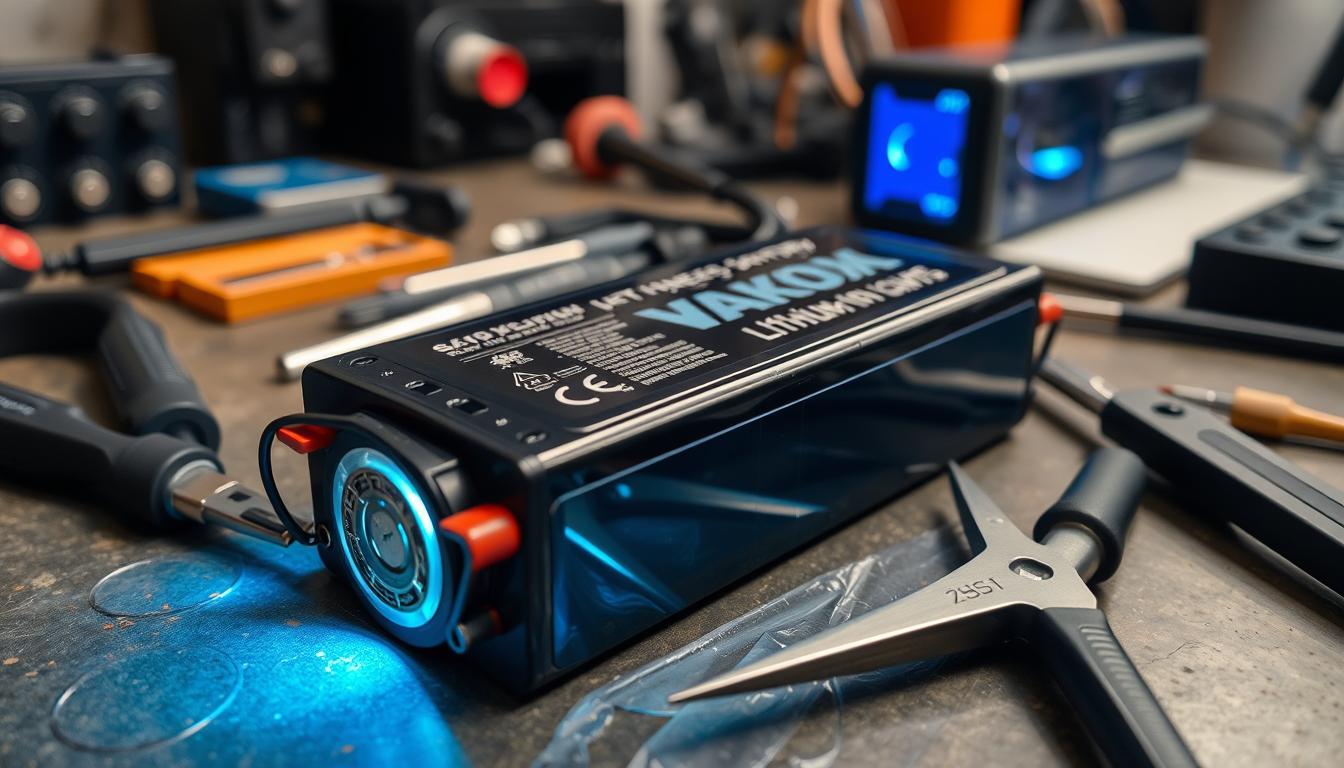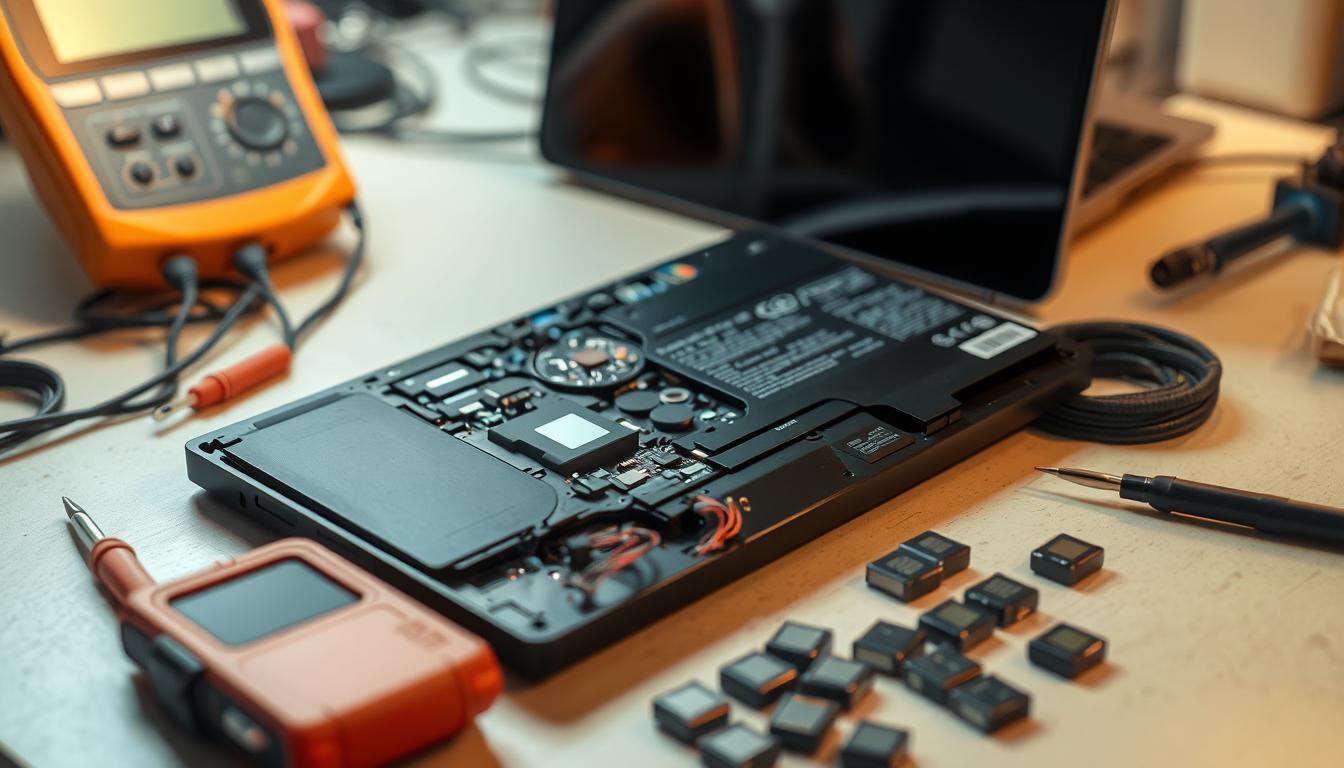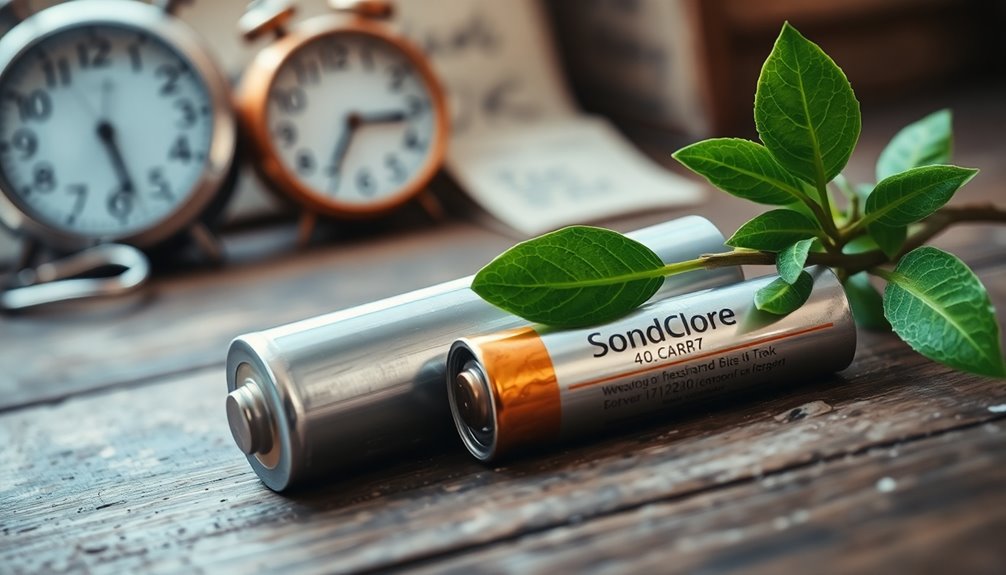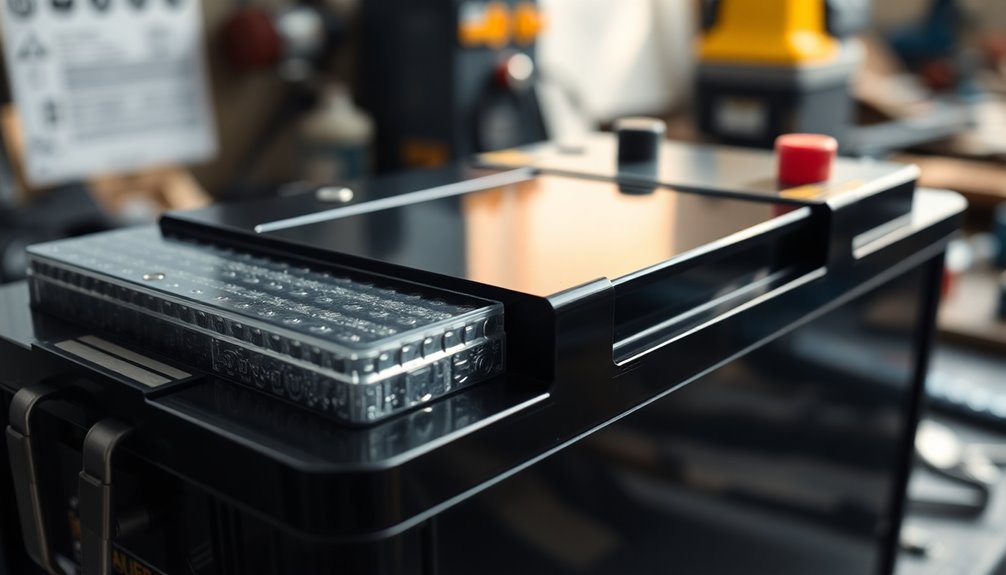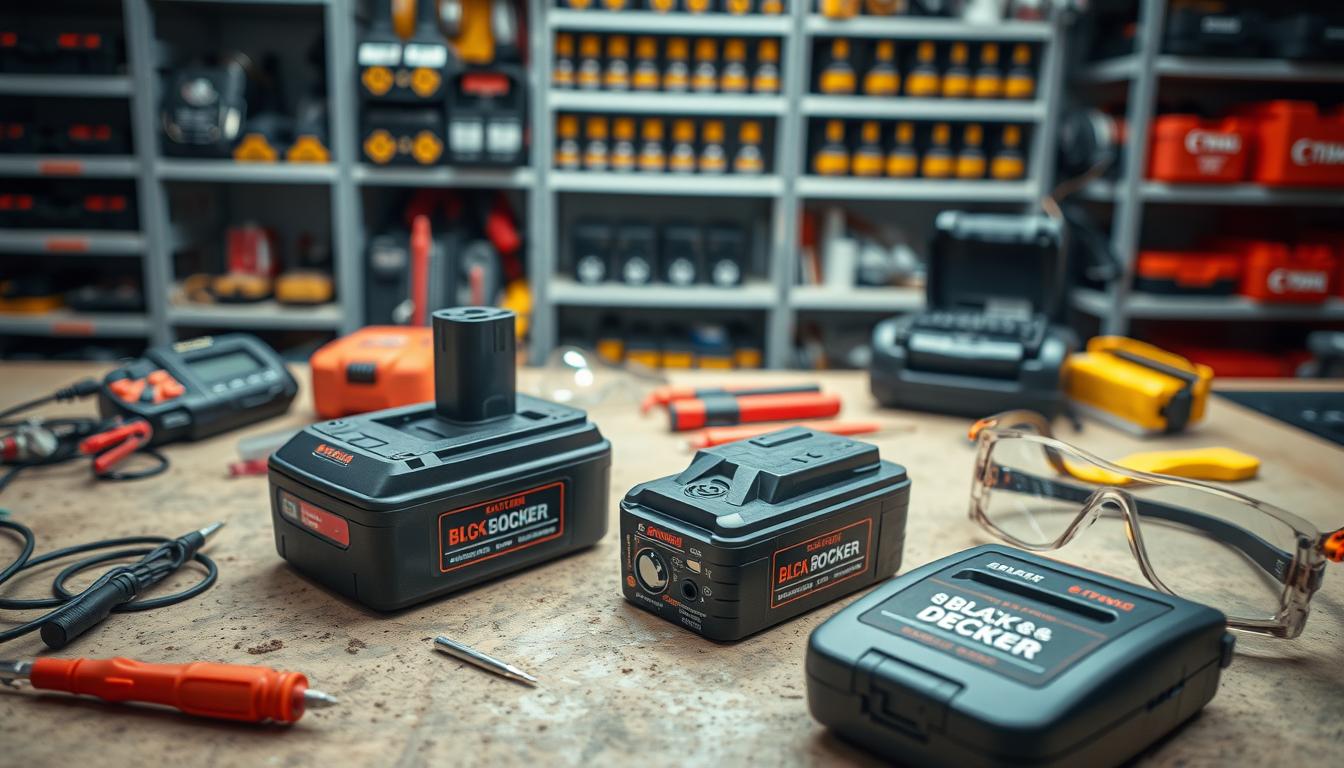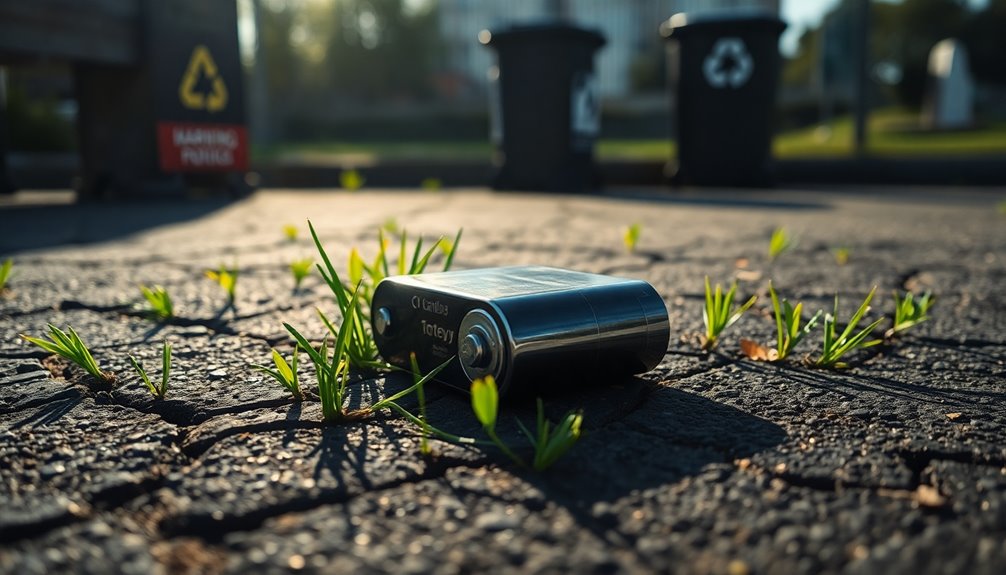Did you know that a staggering 75% of lithium-ion batteries are disposed of prematurely, despite being potentially recoverable through reconditioning? In our increasingly gadget-driven world, lithium-ion batteries power everything from smartphones to electric vehicles, yet their performance inevitably declines over time. Rejuvenate batteries with lithium ion battery reconditioning and avoid the high costs and environmental impact associated with premature disposal. This process not only extends the lifespan of your batteries but also offers a sustainable solution to a widespread problem. As we delve deeper into this guide, you’ll learn about the essential steps, signs that indicate your battery needs attention, and the benefits of effectively restoring your battery’s capabilities, ensuring that you get the most out of your devices12.
Key Takeaways
- The majority of lithium-ion batteries can be reconditioned for extended use.
- Reconditioning could save you money compared to purchasing new batteries.
- Many devices across various sectors rely on lithium-ion batteries.
- The reconditioning process involves multiple cycles to stabilize battery performance.
- Proper battery care can improve longevity and functionality.
- Environmental benefits accompany battery restoration efforts.
- Understanding signs of battery wear can prompt timely reconditioning.
What is Lithium Ion Battery Reconditioning?
Lithium ion battery reconditioning involves the restoration of used batteries to extend their usability and performance. Understanding battery chemistries such as ICR and LiFePO4 plays a significant role in the lithium ion battery refurbishment process. You can take part in DIY battery repair, allowing you to tackle battery issues at home.
Understanding the Basics
This form of battery refurbishment is essential due to the growing applications of lithium ion batteries, which present challenges like safety concerns and regulatory compliance3. Restoring a battery involves understanding its behavior and chemistry, which dictates how it can be effectively reconditioned. For instance, lithium-ion cells boast high energy density and require precision in manufacturing, impacting their lifespan and performance. Proper knowledge enables you to identify when a battery is eligible for rejuvenation, providing environmental benefits while saving money.
Benefits of Reconditioning
The advantages of battery rejuvenation are numerous. By reconditioning, you improve the battery’s performance and longevity, reducing the frequency of replacements4. Reconditioning every 18 to 24 months is advisable for two-way radio batteries, with the entire process potentially lasting up to 12 hours4. Regular maintenance can help eliminate issues like memory effect and restore full capacity, making your batteries more efficient.
Reconditioning aligns with sustainable practices by decreasing e-waste3. Ultimately, this encourages a responsible approach to battery usage, benefiting both users and the environment.
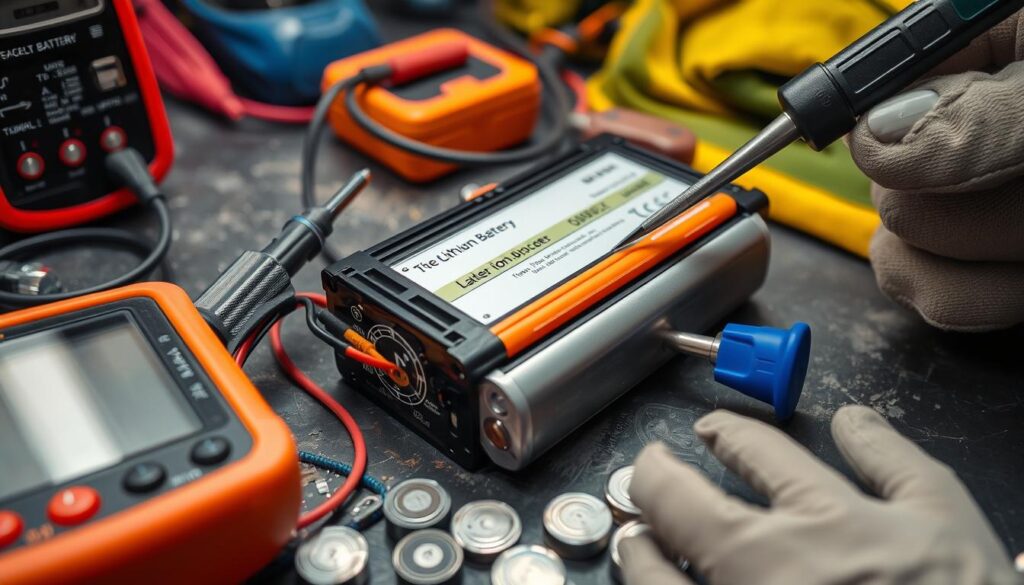
| Benefits of Battery Reconditioning | Description |
|---|---|
| Extended Battery Life | Reconditioning increases the lifespan of lithium ion batteries. |
| Cost Savings | Reduces the need for frequent battery replacements, saving money. |
| Environmental Impact | Decreases electronic waste and promotes recycling efforts. |
| Performance Improvement | Restores capacity and minimizes issues associated with old batteries. |
In summary, understanding the process of lithium ion battery reconditioning empowers you to take proactive steps in maintaining your device’s performance effectively. Additionally, this knowledge supports a more sustainable lifestyle and encourages responsible usage of battery technologies34.
Signs Your Battery Needs Reconditioning
Identifying the signs of battery failure can help you take timely action on your lithium-ion battery. Early recognition of these issues not only aids in smooth operations but also prolongs the lifespan of your device.
Reduced Battery Life
A significant indication of a battery’s decline is a reduced battery life. If your device requires charging more frequently than it once did, this likely suggests wear. Studies reveal that car batteries generally last around five years under perfect conditions; reaching this point may warrant reconditioning or replacement5. If you’re finding yourself jump-starting your car battery frequently, specifically more than three times a week, it can be an indicator of battery weakness5.
Overheating Issues
Overheating during charging can signal serious health issues within your battery. If your battery becomes excessively hot, it can lead to safety problems. Ensuring proper battery maintenance is key; mismanagement may cause damage that could extend to your device’s components, as overheating is a prevalent sign of battery failure6.
Inconsistent Performance
If you experience inconsistent performance, such as sudden device shutdowns or electrical component issues (lights, wipers, etc.), it’s time to assess your battery’s condition. An illuminated check engine light may point to a weakened battery5. Additionally, if you observe a swollen or bloated battery case, it indicates potential chemical component issues triggered by temperature5. Recognizing these signs can help you take further steps to maintain battery health.
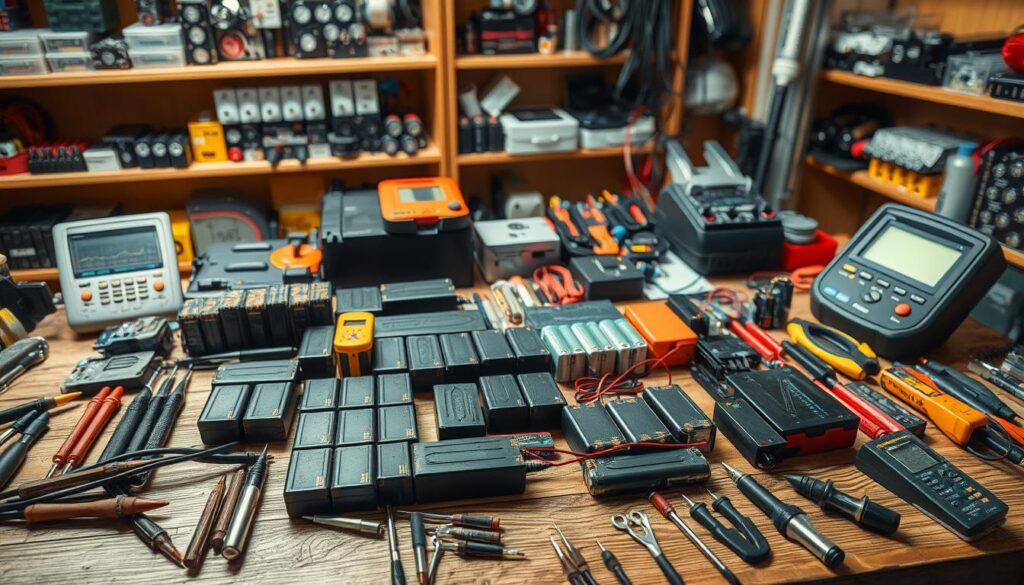
By paying attention to these signs of battery failure, you can help ensure your battery operates efficiently and lasts longer.
| Sign of Battery Failure | Description |
|---|---|
| Reduced Battery Life | Frequent charging required; life expectancy nearing five years5. |
| Overheating Issues | Battery gets excessively hot during charging; potential safety hazard6. |
| Inconsistent Performance | Sudden shutdowns and illuminated warning lights indicate potential battery failure5. |
The Science Behind Battery Reconditioning
Understanding the intricate workings of lithium ion batteries is essential for grasping how reconditioning can enhance their life span. These batteries function by exchanging lithium ions between an anode and a cathode, a process fundamental to their operation. Over time, some lithium becomes inactive, leading to diminished performance. This issue can be addressed through lithium ion battery reconditioning, which aims to restore the battery’s capabilities.
How Lithium Ion Batteries Work
Lithium ion batteries rely on the movement of lithium ions to generate energy. This movement occurs from the anode to the cathode during discharge and in reverse during charging. Over the life cycle of the battery, the formation of isolated lithium islands can lead to capacity loss. Findings show that revitalizing rechargeable lithium batteries can increase battery lifetime by nearly 30%7. By employing certain techniques, it is possible to reconnect this isolated lithium, thus extending battery life significantly.
Reconditioning Process Explained
The reconditioning process involves several techniques aimed at restoring the battery’s functionality. For lithium-ion batteries, methods such as cell balancing and cycle charging are essential. Battery reconditioning can extend the usable life of batteries by months or even years8. Typically, the entire reconditioning procedure takes several hours to a few days, depending on the battery’s condition and type9. Proper safety precautions are crucial as mishandling batteries can lead to accidents. Not only does this process serve as a method of battery recycling, but it is also a viable option for battery refurbishment, often resulting in cost savings compared to purchasing new replacements8.

Tools You’ll Need for Reconditioning
When diving into the process of lithium ion battery reconditioning, having the right tools is fundamental. The correct tools for battery rejuvenation help ensure both safety and effectiveness during the operation.
Essential Equipment
Your toolkit should include several key items:
- Flat blade screwdrivers for opening battery cases.
- Utility knives for precise cuts.
- Multimeters to measure voltage and ensure your batteries are functioning correctly.
- A spudger for safely separating the battery cases without causing damage.
- A battery charger to revitalize the battery.
- A hydrometer for assessing the electrolyte levels.
Using these tools effectively can greatly enhance the reconditioning process and serve as a preventive measure against mishaps, showcasing the importance of safety in battery repair10.
Safety Gear
Prioritizing safety is crucial when handling batteries. Essential safety gear includes:
- Gloves to shield your hands from harmful chemicals.
- Safety goggles to protect your eyes.
- A well-ventilated area to avoid harmful gas accumulation.
Always remember that safety measures are integral to a successful reconditioning effort, preparing you for any emergencies that may arise during the process11. Proper precautions can significantly reduce risks while maximizing the potential benefits of your reconditioned batteries12.

Step-by-Step Guide to Recondition Your Battery
Reconditioning your lithium-ion battery involves multiple stages that can help extend its life and improve performance. With some patience and the right tools, you can master DIY battery repair using effective battery rejuvenation techniques.
Preparing the Battery
Start by safely removing the battery from its housing. Assess the battery’s condition visually, checking for any physical damage such as swelling or corrosion. Basic tools required for this step include flat blade screwdrivers, spudger, side cutters, and utility knives. Wear gloves for safety as lithium-ion cells can be hazardous if mishandled2.
Charging and Discharging
This crucial phase consists of controlled charging and discharging cycles aimed at revitalizing the battery. Balancing cells and cycle charging are common methods used for reconditioning lithium-ion batteries9. Ensure you employ a smart charger specific to your battery type, as this helps prevent potential damage during the reconditioning process8.
Testing the Reconditioned Battery
Once the charging and discharging cycles are complete, it’s time to test your work. Use a multimeter to check the battery’s voltage and performance. Regularly monitor the battery’s efficiency over time to ensure successful rejuvenation and optimize performance9.
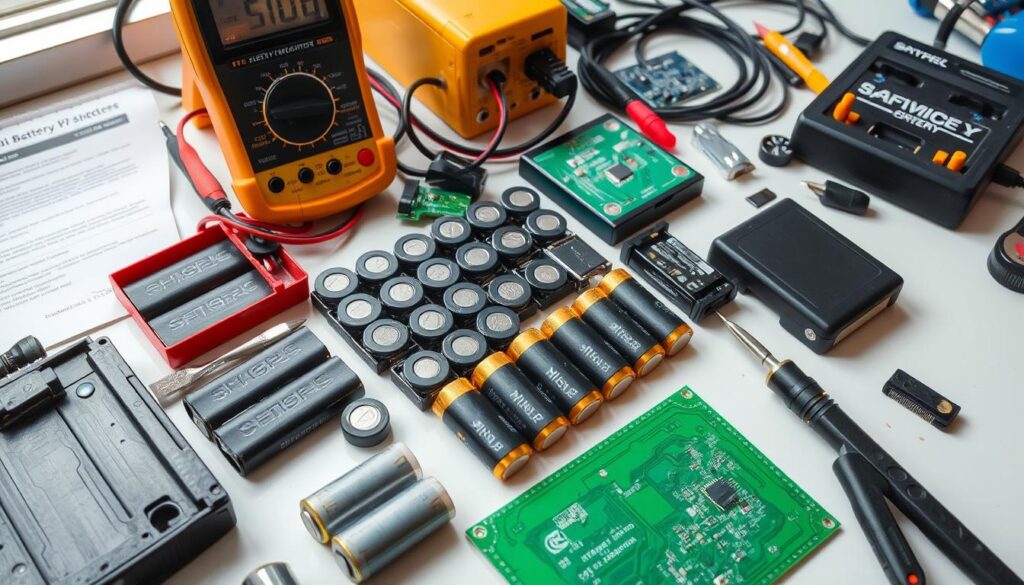
| Step | Action | Tools Required |
|---|---|---|
| 1 | Prepare the battery | Flat blade screwdriver, spudger, side cutters, utility knife, gloves |
| 2 | Charge and discharge | Multimeter, smart charger |
| 3 | Test performance | Multimeter |
This method not only saves money by avoiding the need for new batteries, but it also supports environmental sustainability by reducing e-waste9.
Common Myths About Lithium Ion Batteries
Lithium ion batteries are often surrounded by battery myths that create confusion for users. Understanding the truth behind these misconceptions is crucial for optimal battery care and longevity. Let’s explore some prevalent myths and shed light on actual lithium ion battery facts.
Batteries Die After a Certain Age
A widespread belief is that lithium ion batteries have a predefined lifespan after which they completely fail. In reality, while the average lifespan of a lithium-ion battery is approximately 2-3 years or between 300 to 500 charge cycles, they can last longer with proper maintenance. Keeping the battery charged between 40% and 80% can significantly extend its life13. Modern lithium batteries come with built-in protective measures that stop charging once they reach capacity, which helps maintain their lifespan13.
All Batteries Can Be Reconditioned
Another common misconception is that all batteries are suitable for reconditioning. While many lithium-ion batteries can see improvements, the potential for restoration depends largely on their condition and chemistry. For instance, cobalt-based lithium-ion cells, commonly found in devices like smartphones, offer impressive energy capacity and safety, but this doesn’t guarantee all models can be easily revived14. In some cases, replacing a battery might be a more effective solution than attempting reconditioning13.
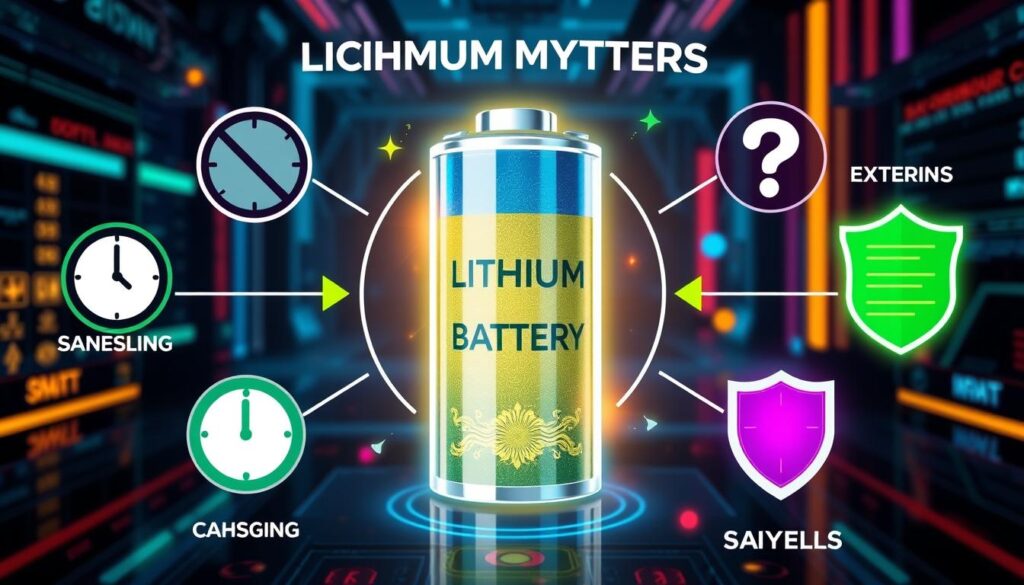
The Environmental Impact of Reconditioning
Battery reconditioning is not just a way to prolong the life of lithium-ion batteries; it significantly impacts the environment. By engaging in the environmental benefits of battery reconditioning, you are actively participating in reducing e-waste and fostering sustainable battery practices. This is crucial as the world is witnessing an unprecedented surge in battery production.
Reducing E-Waste
With an estimated 2500 GWh of lithium-ion batteries projected to be placed on the market by 2030, the disposal of spent batteries poses a growing challenge15. Reconditioning these batteries can effectively extend their usable life, minimizing the volume of discarded batteries that would otherwise contribute to landfill waste. Each single lithium battery, when produced, has a significant carbon footprint, with production costs equivalent to approximately 73 kg of CO2 per kWh, demonstrating the necessity of managing battery waste effectively16.
Encouraging Sustainable Practices
Promoting sustainable battery practices does not only address the physical storage of batteries but also mitigates the environmental impact associated with battery production. For instance, a battery with a 100 kWh range emits 7300 kg of CO2 during its creation, highlighting the critical need for recycling and reconditioning16. By emphasizing the importance of understanding battery maintenance, you can inspire a more environmentally conscious approach among consumers, thereby nurturing a healthier planet.

| Battery Size (kWh) | CO2 Emission (kg) | Environmental Impact |
|---|---|---|
| 40 | 2920 | Significant due to high resource consumption |
| 100 | 7300 | Major contributor to carbon footprint |
| N/A | 73 per kWh | Cost of production that needs to be offset by reconditioning |
As you can see, the ramifications of battery production extend beyond just energy usage; they encompass a broader environmental impact that is exacerbated without effective recycling methods. The practice of reconditioning thus serves as a vital component in fostering a sustainable future15.
When to Seek Professional Help
While many battery issues can be addressed at home, there are specific circumstances where professional assistance becomes necessary. Knowing when to get battery help can save you time, money, and potential hazards. You should consider consulting professional battery services if your battery exhibits certain alarming signs.
Signs You Need Expert Assistance
Look out for the following indicators that suggest it’s time to reach out for expert help:
- Severe swelling or physical damage can be a red flag that your battery is unsafe to use.
- Frequent overheating during charging or operating is another sign that your battery might be malfunctioning.
- Inconsistent performance or unexpected shutdowns can indicate deeper issues that require professional insight.
Finding a Reconditioning Service
Choosing the right reconditioning service is key to ensuring your battery is handled safely and effectively. Here are some tips:
- Look for certifications and positive customer reviews to ensure you are working with a professional service.
- Ask about their techniques and whether they use advanced methods like electrolyte replacement or cell balancing.
- Ensure they prioritize safety with proper practices, including personal protective equipment and a controlled workspace.

Understand that while some DIY methods may offer temporary fixes, they often cannot fully reverse battery aging. If repairs become complicated, the safest route is to embrace professional battery services outside of home repair knowledge171819.
Cost-Effectiveness of Battery Reconditioning
Understanding the financial implications of battery reconditioning can significantly impact your decision-making. By examining both the initial costs and long-term savings, you will see clear advantages in choosing reconditioned batteries over new replacements.
Comparing Costs: New Vs. Reconditioned
The battery cost comparison reveals that purchasing a new electric vehicle battery typically ranges from $5,000 to a staggering $16,000, depending on various factors such as pack size and manufacturer20. In contrast, reconditioning hybrid batteries is a cost-effective solution, offering similar performance at a fraction of the cost21. Moreover, battery prices have dropped dramatically, from over $400 per kilowatt-hour to approximately $111 per kilowatt-hour by the end of 202420. This provides a compelling case for consumers seeking to maximize their investment in battery technology.
Long-Term Savings
Long-term savings play a crucial role in evaluating the economic benefits of battery reconditioning. When you maintain and care for reconditioned batteries properly, they can provide extended utility, reducing the frequency of replacements. The global Battery Rebuild Service Industry is projected to grow significantly, indicating the rising acknowledgment of reconditioning’s cost-effectiveness22. Consequently, more consumers and businesses are discovering that reconditioning can lead to considerable financial savings over time.
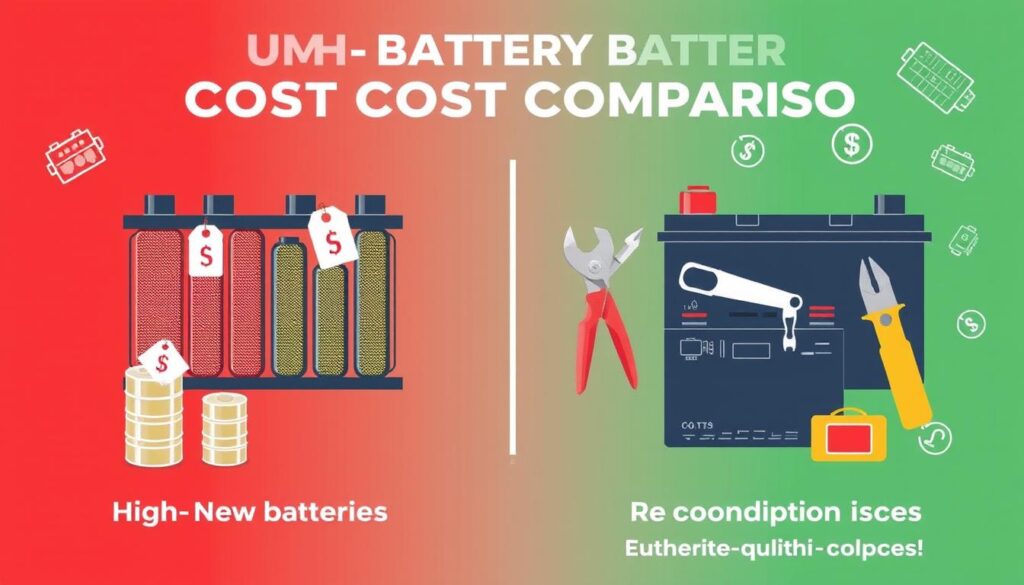
Tips for Maintaining Your Lithium Ion Battery
Maintaining the longevity and performance of your lithium ion battery requires adherence to specific battery maintenance tips and best practices for lithium ion batteries. By implementing proper charging techniques and effective storage recommendations, you can extend the lifespan of your investment.
Proper Charging Techniques
To optimize battery health, charge your lithium ion batteries to about 50% before storing them, and ensure to recharge them at least once every six months. New fully charged batteries provide a specific run time that can be used as a baseline for comparing with older batteries; consider replacement when performance drops below 80% of that run time or when charge times increase significantly23. It is recommended to charge lithium batteries at a rate between C/4 and C/2, helping to maximize their lifespan24.
Storage Recommendations
Store your lithium ion batteries in a cool, dry environment, ideally between 5°C and 20°C (41°F and 68°F) to maintain their storage life23. When not in use, lithium batteries discharge slowly; thus, checking their charge periodically can be crucial to maintaining battery health24. Make it a habit to go through at least one full maintenance cycle for all unused lithium batteries every 6-12 months to keep the capacity in check24.
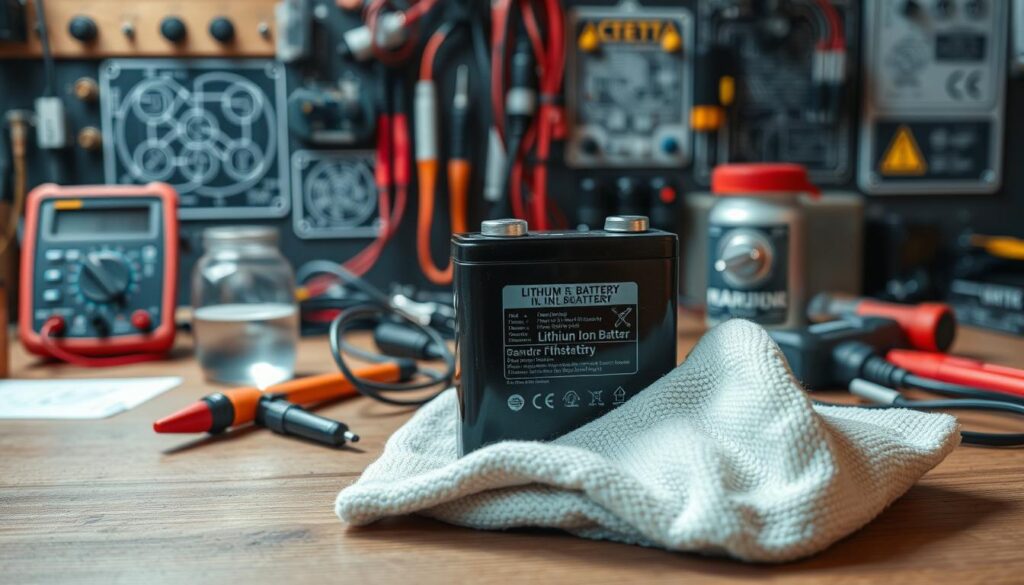
The Future of Lithium Ion Battery Technology
The landscape of lithium ion battery technology is set for remarkable evolution, reflecting the ongoing battery technology advancements aimed at enhancing efficiency and sustainability. Projections indicate that the lithium-ion battery market is set to grow by over 30 percent annually from 2022 to 2030, ultimately aiming for a market size of 4.7 TWh valued at more than $400 billion25. Such rapid growth is largely driven by the increasing demand for batteries in electric vehicles, which are expected to represent a substantial share of this market as more consumers make the shift to electric models.
Innovations on the Horizon
In the coming years, we can expect to see innovations such as solid-state batteries becoming more mainstream, enhancing energy density and safety while significantly reducing charging times26. The advancement in recycling technologies, which is projected to grow significantly, also plays a crucial role in sustaining the rising demand for lithium-ion batteries27. As battery recycling methods improve, this will facilitate recovery of valuable materials like lithium and cobalt, ensuring a circular economy that further complements the future of lithium ion batteries.
Impact on Consumer Electronics and Beyond
The shift in battery technology is not limited to electric vehicles; it extends to consumer electronics, where lighter and faster-charging batteries will define the user experience26. Furthermore, as regulations favoring clean energy become stricter, the industry will push harder towards innovative solutions, paving the way for a more sustainable future27. With the continued growth of electric vehicle sales and investments in battery manufacturing, your experience with technology will increasingly align with the advancements in lithium-ion battery technology, leading to a globally interconnected and sustainable energy landscape.

